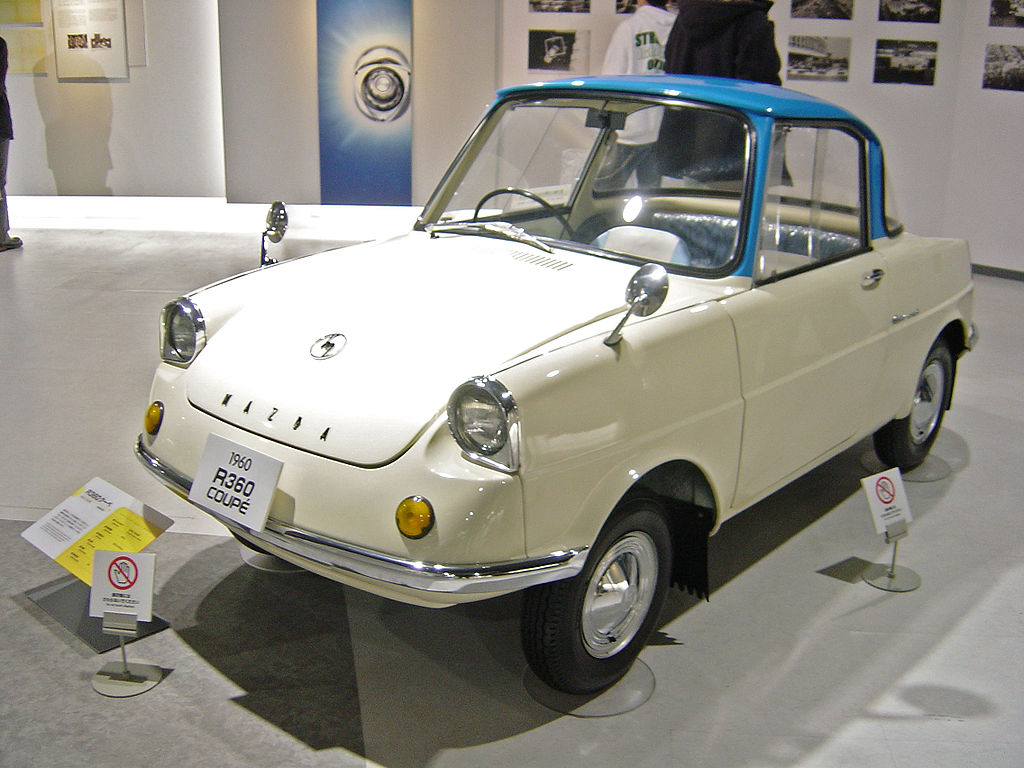Jun 22, 2021
Mazda: The Economic Engine of Hiroshima
Hiroshima is a company town. Mazda is the region’s biggest employer, and the carmaker bankrolls the city’s professional baseball team, the Hiroshima Carp. The company was instrumental in rebuilding Hiroshima after the atomic bombing in 1945. Only days after the blast leveled the city’s industrial base, the Mazda assembly line was back up and running. Space was cleared in the company headquarters for the Hiroshima prefectural government. Japan tends to be parochial when it comes to its automobiles, and it will not take long in Hiroshima to know you are in Mazda country. Compared to most Japanese cities, Hiroshima is absolutely garish with its signs of its deep red baseball team everywhere you look, including red taxis and red cars, all of which it should be noted are brought to you by Mazda.
Car companies have historically taken the name of their founder – Louis Chevrolet, Ferdinand Porsche, Soichiro Honda, Charles Rolls, and Henry Royce. Originally Mazda was no different and was known as Matsuda after its founder Jujiro Matsuda. Mazda, however, changed its name, adapting the spelling to that of the Persian god of light, intelligence, and wisdom, Ahura Mazda. That is because the business began life as a cork company. Founder Jujiro Matsuda started his working life in 1889 as an apprentice to a blacksmith. In his thirties, he invented an industrial pump and gained control of the foundry. During World War I, Matsuda Works churned out military supplies for Russia and manufactured the Type 99 rifle for the Japanese army.
In 1921 Matsuda returned to his hometown to take over a struggling artificial cork manufacturer named Toyo Kogyo. He was not able to revive the company and redirected its efforts into tools. In 1931 Toyo Kogyo introduced its first motor vehicle, a motorized tricycle with a small pick-up bed on the rear. The autorickshaw was called a Mazdago and was sold by Mitsubishi; it puttered around Japanese streets with a single-cylinder, air-cooled engine that cranked out 13 horsepower. The company would not adopt Mazda’s name until 1984, and locals still frequently use “Matsuda” rather than the newer name.
Mazda’s past and future on display
You will learn all this at the Mazda Museum, at the car manufacturer’s global Hiroshima headquarters. The museum is actually deep in the bowels of the enormous Mazda factory. Unlike most of Japan’s car company museums, you cannot just walk in off the street like at a traditional showroom and kick the tires – a tour must be arranged ahead of time. But it is free, easy to arrange, and available in Japanese or English.
The tour starts with a short bus ride from the corporate office to the waterfront manufacturing facility. Inside the gleaming entrance hall are the latest models and award-winning Mazdas of the past. Upstairs in the history room is an array of Mazdagos arranged in front of a circular timeline depicting the Mazda models of yesteryear. On the floor are such curiosities as Mazda’s first passenger car, the 1960 R360 Coupe, and the award-winning Familia from the same era that boasted an all-aluminum four-cylinder engine. This vehicle marked the company’s transition from microcars to family sedans.
An entire section of the museum is devoted to the rotary engine, the pride and joy of Mazda in the automotive world. The technology room takes the visitor through the entire automobile production process from first design to final assembly. The tour winds down with a trip to an observation deck overlooking the actual assembly line. Before you leave, you can check out prototypes for the future and browse the gift shop for Mazda memorabilia and swag from the Hiroshima Carp.
Mazda Museum
By Taisyo (photo taken by Taisyo) [GFDL, CC-BY-SA-3.0 or CC BY-SA 2.1 jp], via Wikimedia Commons


About the author